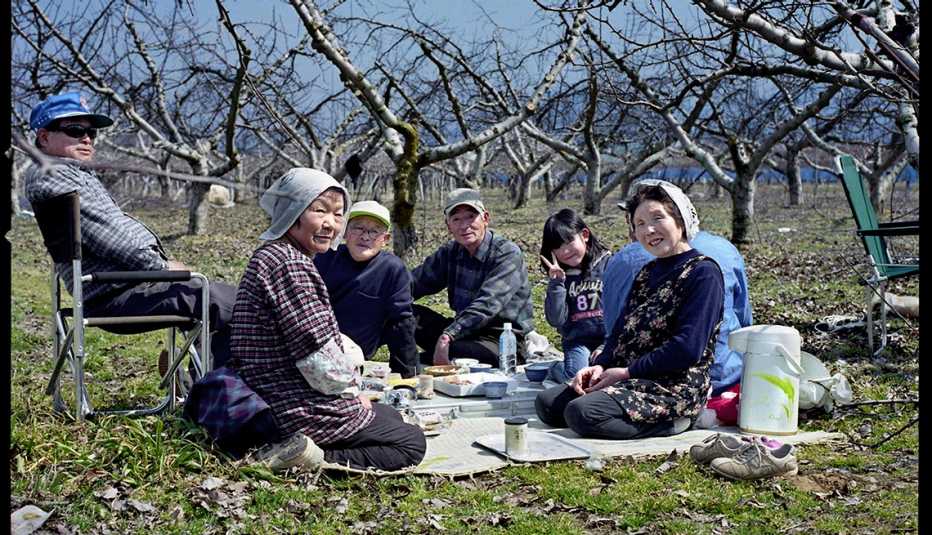Staying Fit


Takami Kuroiwa looks forward to weekends — not so he can relax with a little golf or TV, but to put in 12-hour days on the family farm. His regular job as a tourism manager provides a comfortable living, but raising his own fruit and vegetables is part of a lifelong routine.
At 66, Kuroiwa has already come out of retirement once and expects to work well into his later years.


AARP Membership— $12 for your first year when you sign up for Automatic Renewal
Get instant access to members-only products and hundreds of discounts, a free second membership, and a subscription to AARP the Magazine.
"It's part of the lifestyle here. You work in an office and then you retire to the farm. It's just the next stage in life," Kuroiwa says. As it turns out, it's a very long life.
A healthy diet, regular physical activity, extended work years and aggressive government intervention have helped the Nagano region produce the longest life expectancy in Japan, which in turn is the longest in the world. That marks a remarkable turnaround for an area that, as recently as the early 1980s, had the highest rate of strokes in Japan.
Women in Nagano prefecture, an area slightly smaller than Connecticut, can expect to live an average of 87.2 years, while men can look forward to living 80.9 years, according to the latest data from Japan's Ministry of Health, Labor and Welfare. (In comparison, life expectancy in Connecticut averages 78.6 years for men and 82.9 for women. Hawaii has the highest life expectancy in the U.S., at 78 for men and 84.7 for women.)
The lifestyle in Nagano, home of the 1998 Winter Olympics, has also produced some of the lowest per capita medical costs in Japan. That saves consumers and taxpayers millions of dollars a year.
Officials now are hoping to export the Nagano experience to the rest of the country, and perhaps even farther.
"Nagano is unique in many ways, but there are lessons you can apply anywhere. Improve your diet, stay active, continue to work as you get older. The key is not just to live longer, but to stay healthy longer," says Takuji Shirasawa, M.D., who teaches at the Department of Aging Control Medicine at Juntendo University in Tokyo.
Nagano at a Glance
Location: Japanese Alps
Size: 5,245 square miles (almost the size of Connecticut)
Population: 2.15 million
No. 1 in: Life expectancy, employment rate for those 65+ and vegetable consumption per capita
Keys to a long life
Japan is one of the most rapidly aging societies in the world. A quarter of the population is age 65 or older. In Tokyo alone, some 3.1 million residents will be 65 or older by 2025, according to the health ministry.
Keeping those people healthy and productive is key to controlling costs for Japan's national health care system and helping offset a declining birth rate.

































































More on health
Monitoring Your Blood Pressure at Home
Why it's so important and how to do it right